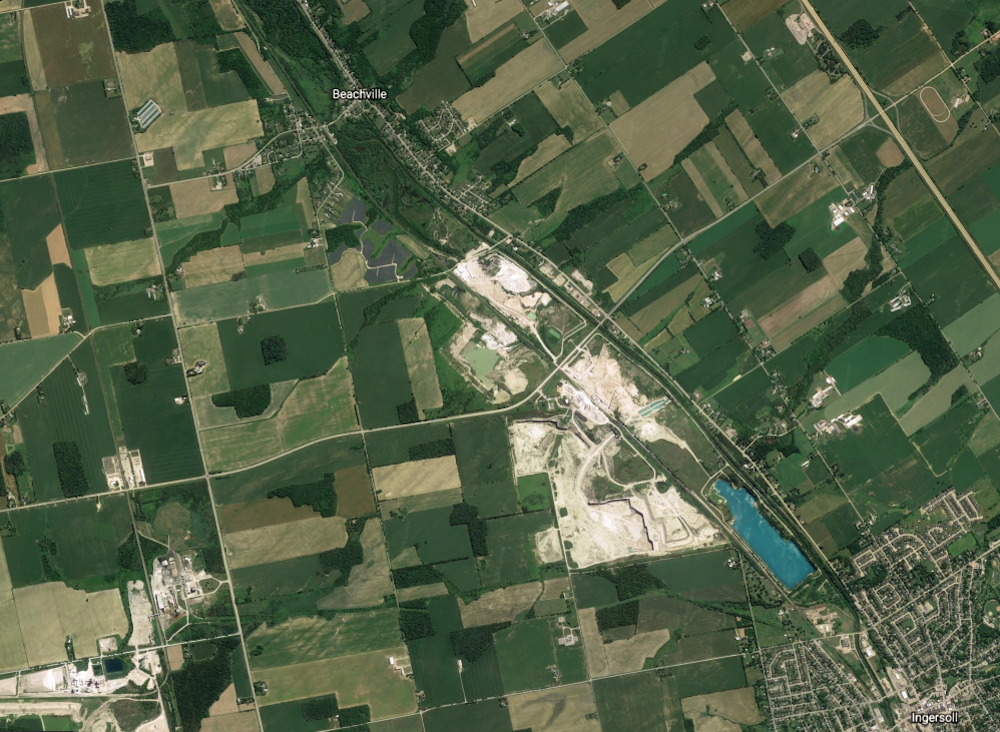Welcome to The Limestone Capital
The Village of Beachville was once a central hub along the well-travelled Old Stage Road between Ancaster, Ontario and Detroit, Michigan. Beachville boasted several hotels, stores, schools and churches by the mid-19th century. As much as these sites and institutions contributed to the village’s history, its geology has long set this small community apart.
Beachville is nestled in the Thames River Valley, which was carved by the flow of the Thames River. Along the valley, beneath shallow layers of soil, are significant reserves of the natural resource – limestone. While limestone is common across the Province of Ontario, the deposits around Beachville contain some of the whitest and purest stone. For these reasons, they have been actively mined since the 1830s.
As communities around Beachville expanded, the stone was deemed useful in its raw form and used for buildings and infrastructure. It was also burned into a powder and used to plaster interior walls. As the limestone industry matured and the various uses of limestone became more appreciated, demand grew; more and more of the village’s residents bought up lands for quarrying. Large portions of the population became employed seasonally or for their entire working lives at the quarries. The community was tagged “The Limestone Capital.”
Limestone has remained central to the identity and development of Beachville, and we are excited to share its fascinating history. To begin, let us look at how limestone formed in the Thames River Valley.





